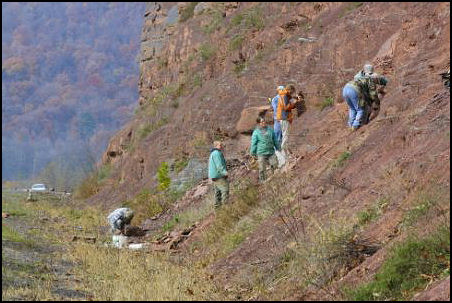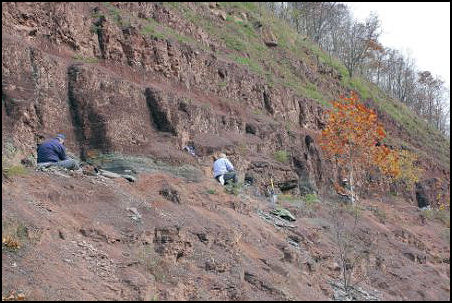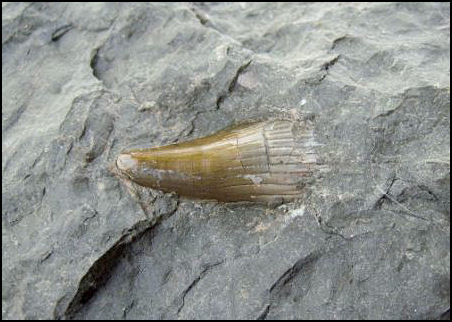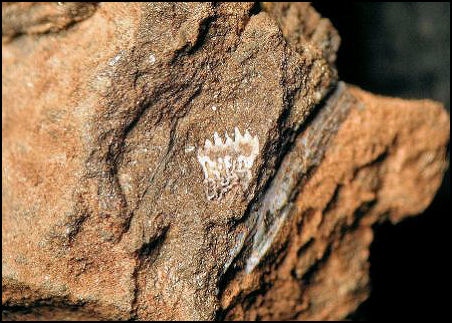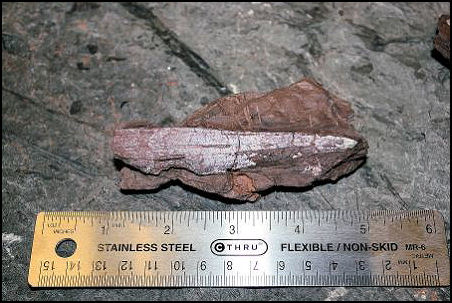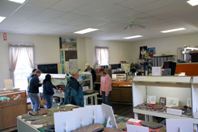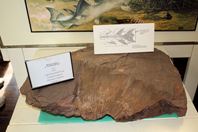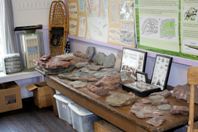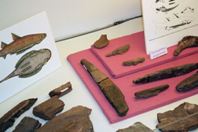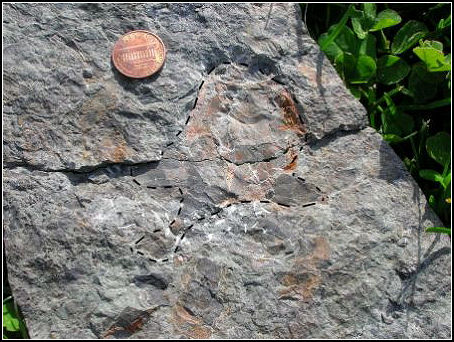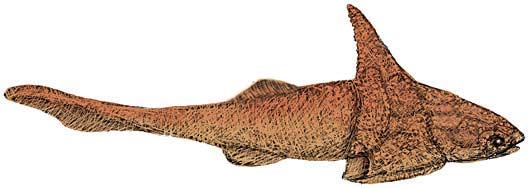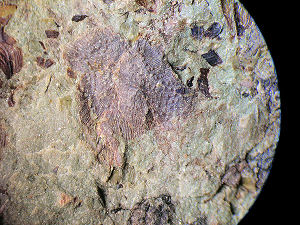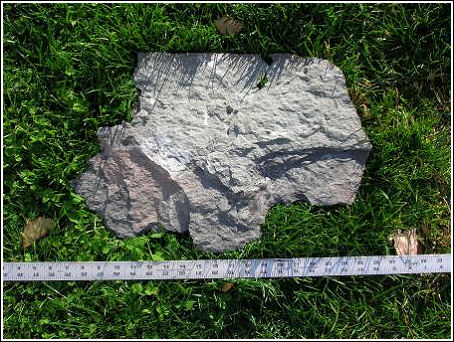|
Red Hill PA. |
||
|
Oct. 2010 Iíve heard some good and some bad about Red Hill, PA but the planned Fall DVPS trip fit into my schedule nicely. With plenty of room in my SUV for equipment I teamed up with my friend Bob and his wife DeeDee to car pool for the 5 hour drive up. I contacted my friend Steve who had been there several times and he was able provide the information on the tools we would need plus some helpful hints. Red Hill is a Late Devonian fresh water fossil
site located in central Pennsylvania and an active research site for the
ANSP (Academy of Natural Sciences in Philadelphia) Collecting at Red Hill requires climbing onto one of the ledges on the cliff side, clearing away a shelf and trying to extract slabs of the red mudstone to split open looking for fossils. A number of the less adventurous will simple search through the spoil piles at the base of the cliff. I saw a number of very good finds turn up using this method. I have to admit that all of this was great fun and Iím looking forward to the next trip. I did pick up a large slab of ďgreenĒ mudstone full of plant material as we were leaving with the intention of using it as a stepping stone in my garden. About a week later I discovered a bone in the slab which caused a bit of excitement for a brief period of time. Iíve put the complete story on that one on a separate page.
View of the Red Hill site.
During lunch we took a trip over to the field station.
I was working the contact between a layer of red and green mudstone and
pulled
I've drawn a black dotted line around the armor plate to distinguish it from
the surrounding
Illustration of Turrisaspis elektor.
|
||
